Introduction
On June 28, the Supreme Court of the United States (SCOTUS) handed down its decision in Loper Bright Enterprises v. Raimondo, ending four decades of “Chevron deference” and imperiling the regulatory state as we know it. The doctrine in question is the result of Chevron U.S.A. v. NRDC (1984), in which the Court held that, where statutory ambiguities exist, federal judges must generally defer to the interpretation of regulating agencies. This doctrine has allowed experts in federal agencies to make nitty-gritty policy decisions (such as defining ambiguous terms) that Congress might lack the capacity to handle, and judges might lack the expertise to address. With the Court’s 6-3 ruling in Loper Bright, however, the era of “Chevron deference” has come to an end. The majority held that “Courts must exercise their independent judgment in deciding whether an agency has acted within its statutory authority,” upending the foundations of the modern regulatory state and calling its future into question.
In this issue of Around the Halls, scholars from Brookings Center for Technology Innovation and the Brown Center for Education Policy explore the implications of the recent SCOTUS decision.
Loper Bright puts national policy decisions in the hands of judges
Former Secretary of the U.S. Department of Commerce, William Daley, is reputed to have said that every Commerce Secretary comes into the job expecting to deal with broad economic and trade issues and soon learns they are the “Secretary of Fish.” The Commerce Department includes the National Oceanographic and Atmospheric Administration (NOAA), which regulates fishing in federal waters.
So it was that when I was helping to lead the Commerce Department. Back then, our most difficult congressional relations were about NOAA enforcement and administration of limits on fish catches. NOAA was especially a target dealing with the storied fisheries of the Grand Banks between Cape Cod and Nova Scotia, where dwindling fish stocks meant grim choices between disappearing fish and disappearing livelihoods. When the agency sought to make fishers pay the costs of putting observers on certain boats to monitor compliance with catch limits, it was a little like rubbing salt into wounds.
I also thought the program pushed the bounds of NOAA’s authorities under its statute and appropriations law, but I considered it a reasonable solution to the challenges of implementing the program—the kind of difficult choices that agencies must make to carry the mission Congress has assigned them. It was this program that provided the setting for the Supreme Court’s decision to overturn the Chevron doctrine.
The facts of the program and NOAA’s statute were essentially irrelevant to the outcome of the case. The Court could have resolved the issue under Chevron by deciding that NOAA’s authority was not ambiguous under the circumstances. Indeed, the Court’s grant of certiorari was on the question whether Chevron “should be overruled or clarified [emphasis added],” but the opinion was all about the overruling of Chevron and not about the case at hand. NOAA’s awkward observer program simply provided a target of opportunity for the Court’s evident wish to undo Chevron.
The upshot is that now federal judges will fill in the interstices of regulatory statutes. These laws are full of ambiguities—sometimes deliberately on points where members of Congress are unable to reach political agreement or where they lack the technical knowledge and expertise, sometimes inadvertently where they are unable to foresee consequences or developments. Some of these unanswered questions may be matters of statutory interpretation, but more often they involve policy and technical choices.
Chevron provided a framework for tethering those to statutes in the context of upholding a Reagan administration reversal of the Carter administration environmental policy. Alan Morrison, a longtime public interest advocate and administrative law scholar, wrote in 2014 that “Chevron is not a Democratic or a Republican doctrine, but one that advantages Presidents of all parties.” This policymaking flexibility is a feature of a democratic system. The Supreme Court now puts the decision-making power on many technical and policy issues into the hands of unelected lifetime judicial appointees.
Bye, bye, Chevron, but it is not the disaster some feared
Chief Justice John Roberts’ opinion in Loper Bright Enterprises v. Raimondo overturning Chevron deference appears to be a defeat of the administrative state by an out-of-control judicial oligarchy. But an interpretation of the case by conservative Harvard law professor Adrian Vermeule shows how congressional leaders of tech policy reform can accommodate the changed legal environment.
The Loper Bright opinion emphasizes that judges must “exercise independent judgment in determining the meaning of statutory provisions” and that an agency’s interpretation of a statute “cannot bind a court.” Going forward, the courts, not the agencies, will determine what the law is.
But Vermeule draws attention to a striking passage in the opinion (pp. 17-18) stating that under the new regime, the courts should not substitute their independent judgment on an agency’s action as long as it is reasonable and within the boundaries of clearly and constitutionally delegated authority.
This is not good news for federal agencies operating under statutes with significant statutory ambiguity; their expert interpretations will be second-guessed by generalist judges. But the message for congressional tech policy reformers could not be clearer. Going forward, if Congress wants an agency to perform a function to regulate privacy, artificial intelligence, kids’ online safety, social media content moderation, or anti-competitive economic discrimination, it must specify that with absolute clarity.
Under the new Loper Bright delegation regime, courts could review an agency judgment taken pursuant to such a clear delegation of authority to ascertain whether the action really did fall within the delegation and whether it was reasonable. But the Court could not substitute its own judgment for the reasonable judgment of the agency. For forward-looking clear grants of authority at least, Chevron lives on in the guise of the new Loper Bright delegation rule.
Delaying regulations is costly for students and the government
Virtually every aspect of higher education is governed through some regulatory interpretation of the Higher Education Act (HEA). Given ongoing congressional gridlock (HEA is more than a decade past its reauthorization deadline), the executive branch has been an increasingly active player in higher education policymaking. Even before the end of Chevron deference, there have been many guardrails on how the executive branch can regulate higher education legislation. These policies have created a regulatory system that centers the expertise of agency officials and the concerns of the public and affected groups.
When political parties disagree with policy, they have had the same regulatory process available to rescind rules, as Secretary of Education Betsy DeVos did when she rescinded Obama-era regulations around “gainful employment.” Finally, both progressives and conservatives have leveraged judicial review to oppose policy—challenging what constitutes “gainful employment” or what authority the Department can exercise to alter the terms of income-driven repayment. However, without the Chevron deference framework, these suits will increase in frequency and have a greater likelihood of stopping regulations from going into effect.
The ultimate impact will be on students and colleges left in limbo as the executive branch proposes regulations, enacts them, and then days later must pause implementation pending judicial review. This is already playing out—new elements of the Biden administration’s income-drive repayment plan were set to go into effect this month but were paused because of lawsuits. The U.S. Department of Education had to put several borrowers into temporary forbearance while the courts decided what percent of their discretionary income they should pay toward their loans. Borrowers don’t know what they owe, and the government is incurring costs by calculating and recalculating borrowers’ payments depending on which policy is in place. The administrative state is complicated enough for students and borrowers to navigate without changing the rules day after day, but the end of Chevron means an even more complicated bureaucracy.
Getting what you wished for may not necessarily be a win
Conservative business advocates got what they wanted in the Supreme Court’s repeal of the Chevron Doctrine. Corporate chieftains will now have to deal with the uncertainty and instability that results.
A political process built on negotiation and accommodation has been replaced by judicial absolutism. Legislation often requires ambiguity to gain the votes necessary for passage. The lack of precision in statutory language also enables the agility necessary for dealing with fast-paced technologies. Congress created expert administrative agencies to deal with both situations. Congress also directed that those decisions had to be based on the facts developed in the proceeding.
Previously, court review of agency decisions was based on its reasonableness and whether the decision was supported by the facts in the record. Elimination of the Chevron Doctrine now allows the courts to substitute their own determination as to what a correct outcome should be. “In one fell swoop,” Justice Kagan wrote, the Supreme Court “gives itself exclusive power over every open issue—no matter how expertise-driven or policy-laden.” In place of an open back-and-forth on the facts, conducted by subject matter experts, judges without specialized expertise are now invited to substitute their own opinions.
Corporate executives for whom uncertainty is anathema should prepare to welcome the uncertainty of multiple judges in multiple circuits making decisions on topics they have never before considered. One thing is for certain, however: Extended instability as the process of multiple judges, multiple venues, and multiple levels of court review eats up the calendar.
Previously, the companies had the right to go to court to seek review of an agency decision. To whom will those feeling abused appeal a poorly reasoned judicial decision? The Congress? Congress, of course, could legislate with specificity to make these concerns moot. But such specificity would make new legislation even more difficult to pass (at a time when congressional productivity is already at a low point).
Welcome to a new era of judicially imposed uncertainty.
-
Acknowledgements and disclosures
CTI and the Brown Center acknowledge the support of Jack Malamud for compiling the introductory commentary for this piece.
The Brookings Institution is committed to quality, independence, and impact.
We are supported by a diverse array of funders. In line with our values and policies, each Brookings publication represents the sole views of its author(s).


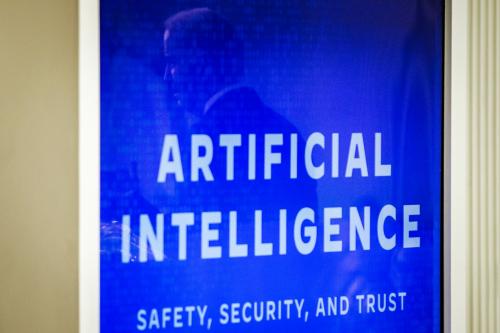
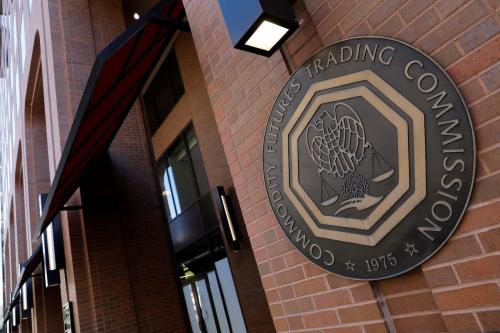
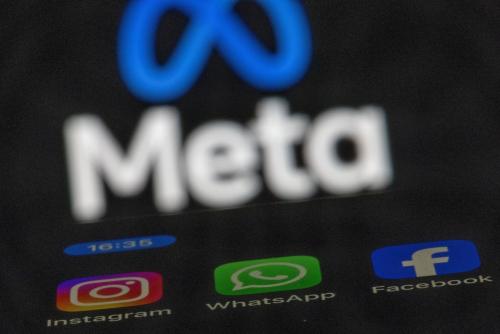

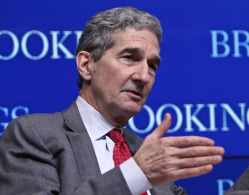



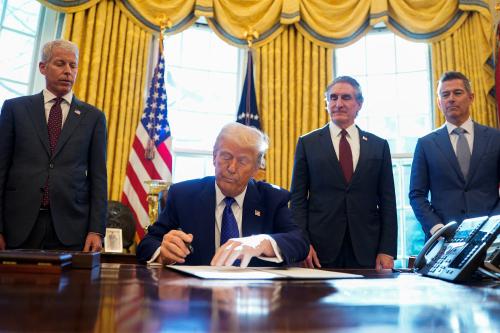
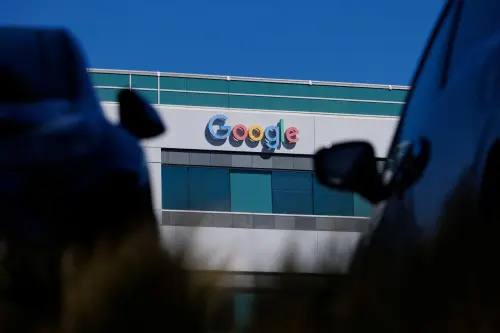
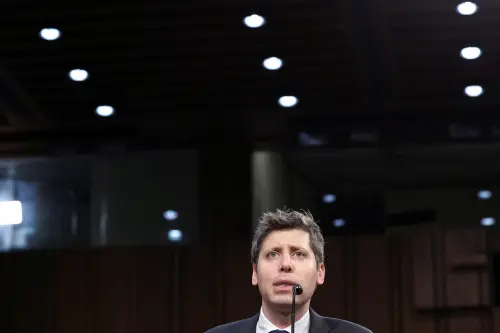
Commentary
Around the halls: After Chevron, what’s next?
July 10, 2024